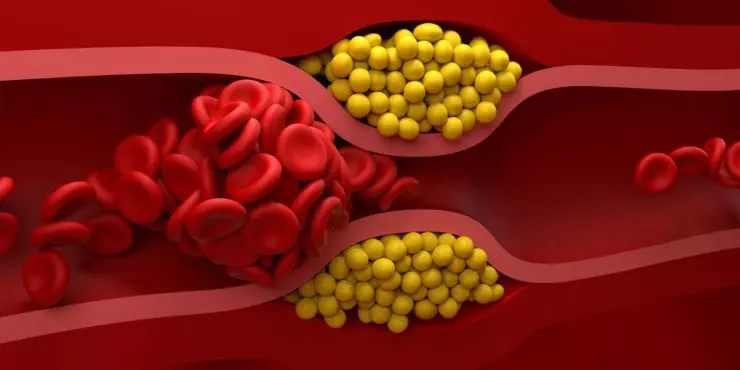
"Bad" cholesterol and "good" cholesterol are terms often used to describe different types of lipoproteins, which are molecules that carry cholesterol and other fats throughout the bloodstream. These lipoproteins play a crucial role in maintaining overall health, but imbalances between them can contribute to heart disease risk. Let's break down these terms and discuss how to raise "good" cholesterol while managing "bad" cholesterol.
Bad Cholesterol - Low-Density Lipoprotein (LDL)
Low-density lipoprotein (LDL) cholesterol is commonly referred to as "bad" cholesterol because elevated levels of LDL cholesterol in the bloodstream can lead to the buildup of cholesterol on artery walls. This buildup, known as plaque (also called atherosclerosis), can narrow arteries and restrict blood flow, increasing the risk of cardiovascular diseases such as heart attacks and strokes. Keeping LDL cholesterol levels within a healthy range is important for heart health.
Foods that are high in saturated and trans fats may contribute to raising "bad" cholesterol. Here are some examples of foods that should be limited or avoided all together as they may raise “bad” cholesterol:
- Deep-fried food
- Snack foods like cookies, cakes, pastries, doughnuts, potato chips, meat jerkey
- Some margarines
- Sausages, bacon, deli meats, and high-fat cuts of beef can contain significant amounts of saturated fat
- Full-fat dairy like ice cream, butter, and processed cheeses
- Pre-cooked or microwaveable meals
- Most processed and fast foods
Good Cholesterol - High-Density Lipoprotein (HDL)
High-density lipoprotein (HDL) cholesterol is often called "good" cholesterol because it helps transport excess cholesterol from other parts of the body back to the liver, where it's processed and excreted. Higher levels of HDL cholesterol are associated with a lower risk of heart disease. HDL cholesterol also has anti-inflammatory and antioxidant properties that contribute to cardiovascular health.
How to Raise Good Cholesterol (HDL):
Exercise Regularly: Engaging in regular physical activity can increase HDL cholesterol levels. Aim for at least 150 minutes of moderate-intensity aerobic exercise per week (for adults).
Consume Healthy Fats: Foods rich in healthy fats, such as avocados, nuts, seeds, and fatty fish (like salmon).
Limit Saturated and Trans Fats: Reducing your intake of saturated and trans fats, as listed above.
Choose Whole Grains: Consuming whole grains instead of refined grains. Examples of whole grains include whole wheat, oats, quinoa, brown and wild rice.
Moderate Alcohol Consumption: Some studies suggest that moderate alcohol consumption may increase HDL cholesterol levels. However, excessive alcohol intake can have negative health effects, so moderation is key.
Quit Smoking: Smoking lowers HDL cholesterol levels and damages blood vessels. Quitting smoking can improve your overall cardiovascular health, including your HDL levels.
Maintain a Healthy Weight: Losing excess weight and maintaining a healthy weight can have a positive impact on HDL cholesterol levels.
Include Omega-3 Fatty Acids: Omega-3 fatty acids, found in fatty fish (like salmon, seabass, oysters, mackerel, tuna, herring, sardines) and certain plant sources like flaxseeds, walnuts, seaweed (like nori used in sushi rolls), chia seeds, and edamame can raise HDL cholesterol and provide other heart-healthy benefits.
Manage Stress: Chronic stress can affect cholesterol levels. Practicing stress-reduction techniques such as mindfulness, meditation, and yoga may have a positive impact.
Remember, Every Body is Unique
Remember that individual responses to lifestyle changes can vary. It's always a good idea to consult with your doctor before making significant changes to your diet or exercise routine, especially if you have existing health conditions or are taking medications. Monitoring your cholesterol levels through regular check-ups can help you track your progress and make informed decisions about your heart health. Just another good reason to get in for your regular visits!